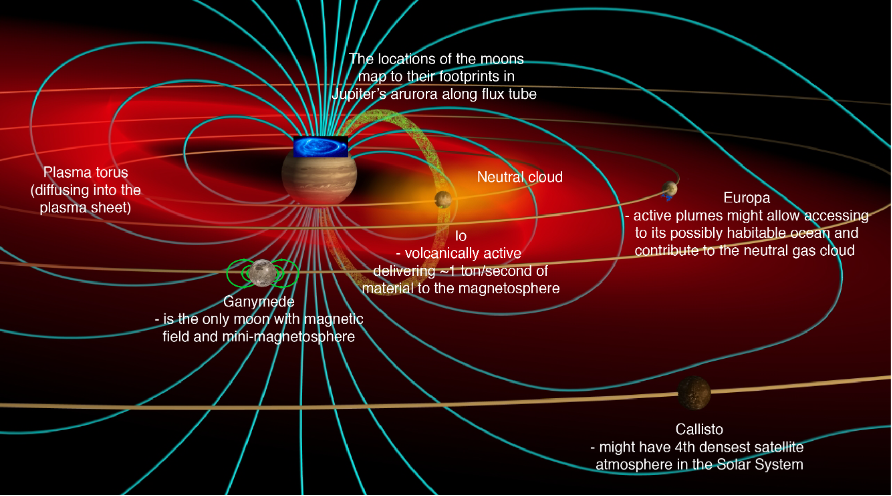Remote-sensing of the Jupiter system
In this project, we study Jupiter’s magnetosphere and the Galilean moons using remote-sensing telescope observations.

Jupiter is not only the largest planet of the Solar System, it also has the strongest magnetic field and shortest rotation period, generating a tremendous, fast rotating and highly dynamical magnetosphere. With four large and numerous small moons, the far-reaching plasma sheet and the complex couplings between the various objects, the Jupiter system is often considered a planetary system in itself (see figure). In particular, the Galilean moons, Io, Europa, Ganymede, and Callisto, are all diverse planetary worlds for themselves, and they play a crucial role for internal magnetospheric processes. Their interactions with the surrounding magnetosphere even leave remote marks in Jupiter’s atmosphere: the moons’ auroral footprints.
In the projects of the SPP group, we analyze observations by large telescopes on the ground or in orbit around Earth to study the moons. We are specialized in using ultraviolet imaging and spectroscopy data taken by the NASA/ESA Hubble Space Telescope. We are interested in particular in the moons’ tenuous atmospheres and gas environments and how they interact with the magnetospheric plasma environment.
Funding: VR 2017-04897 , SNSA 154/17
